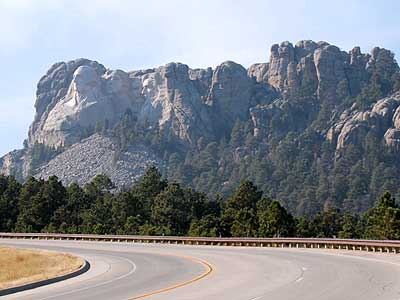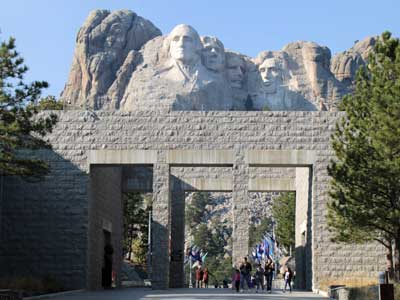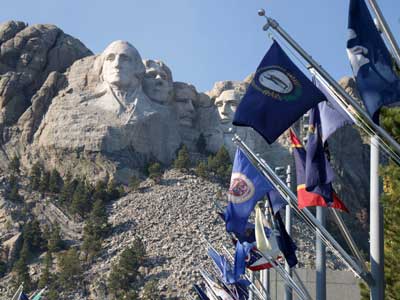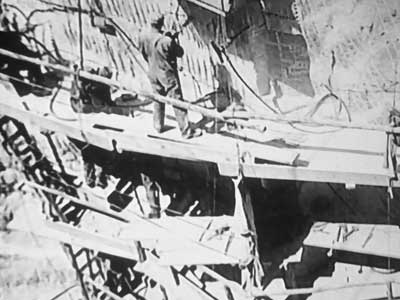Mount Rushmore was close by, so we headed over.






The Mount Rushmore National Memorial was sculpted by Danish-American Gutzon Borglum. This spot was chosen because of its higher quality of granite. Originally known to the Lakota Sioux as Six Grandfathers, the mountain was renamed after Charles E. Rushmore, a prominent New York lawyer, during a prospecting expedition in 1885.
After securing federal funding, construction on the 60-foot tall sculptures began in 1927, and the presidents' faces were completed between 1934 and 1939. Upon Gutzon Borglum's death in March 1941, his son Lincoln took over construction.



Map of the area (click for a larger image)



The Avenue of Flags



We first toured the visitor center.




Honeycombing was the process of drilling shallow holes close together. This weakened the rock so that precise amounts of granite could then be removed using a hammer and chisel.




Amazingly enough, with 400 workers over the course of 14 years, there was not a single fatality and no major injuries.


The carving required a small village on the mountain top... the winch house, a repair shop for tools, sheds to store dynamite, shelter from sudden storms, a landing for the tram car, etc.






A drill bit would only last 30 minutes due to the extremely hard granite. The workers went though 400 bits per day. There had to be a blacksmith on site in order to continually make and sharpen them.




return • continue